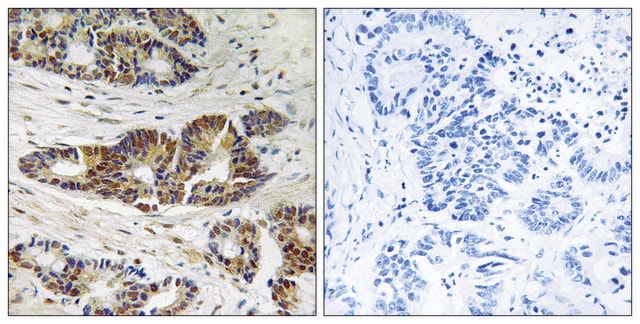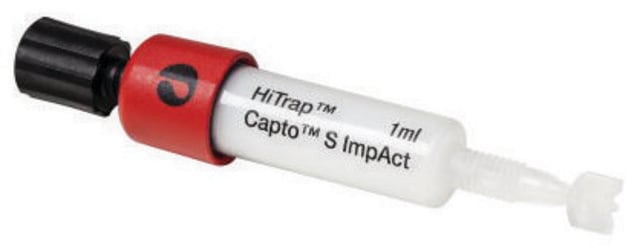05-465
Anti-GRK 2/3 (βARK 1/2) Antibody, clone C5/1.1
clone C5/1.1, Upstate®, from mouse
Synonym(s):
G-protein coupled receptor kinase 2, adrenergic, beta, receptor kinase 1, beta adrenergic receptor kinase 1
About This Item
Recommended Products
biological source
mouse
Quality Level
antibody form
purified antibody
antibody product type
primary antibodies
clone
C5/1.1, monoclonal
species reactivity
rat, mouse, bovine, chicken, human, rabbit, pig
manufacturer/tradename
Upstate®
technique(s)
immunoprecipitation (IP): suitable
western blot: suitable
isotype
IgG2aκ
UniProt accession no.
shipped in
dry ice
target post-translational modification
unmodified
Gene Information
chicken ... Grk2(426000)
human ... GRK2(156)
mouse ... Grk2(282682) , Grk2(110355)
pig ... Grk2(100513842)
rat ... Grk2(25238)
General description
GRK2 phosphorylates the beta2 adrenergic receptor. It is a ubiquitous cytosolic enzyme that specifically phosphorylates the activated form of the beta-adrenergic and related G-protein-coupled receptors.
Specificity
Immunogen
Application
A previous lot of this antibody was used to immunoprecipitate GRK2/3 from transfected cells, as shown by an independent laboratory.
Signaling
GPCR, cAMP/cGMP & Calcium Signaling
Quality
Western Blot Analysis:
0.1-1 µg/mL of this lot detected GRK2/3 (βARK 1/2) in RIPA lysates from mouse 3T3/A31 fibroblasts. Previous lots of this antibody detected GRK2/3 in bovine brain cytosol preparation, rat L6 myoblasts, human A431 carcinoma and human HeLa cell RIPA lysates.
Target description
Physical form
Storage and Stability
Handling Recommendations:
Upon receipt, and prior to removing the cap, centrifuge the vial and gently mix the solution. Aliquot into microcentrifuge tubes and store at -20°C. Avoid repeated freeze/thaw cycles, which may damage IgG and affect product performance.
Analysis Note
Positive Antigen Control: Catalog #12-305, 3T3/A31 lysate. Add 2.5 μL of 2-mercapto-ethanol/100 μL of lysate and boil for 5 minutes to reduce the preparation. Load 20 μg of reduced lysate per lane for minigels.
Other Notes
Legal Information
Disclaimer
Not finding the right product?
Try our Product Selector Tool.
Storage Class Code
12 - Non Combustible Liquids
WGK
WGK 1
Flash Point(F)
Not applicable
Flash Point(C)
Not applicable
Certificates of Analysis (COA)
Search for Certificates of Analysis (COA) by entering the products Lot/Batch Number. Lot and Batch Numbers can be found on a product’s label following the words ‘Lot’ or ‘Batch’.
Already Own This Product?
Find documentation for the products that you have recently purchased in the Document Library.
Our team of scientists has experience in all areas of research including Life Science, Material Science, Chemical Synthesis, Chromatography, Analytical and many others.
Contact Technical Service





